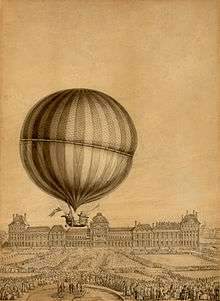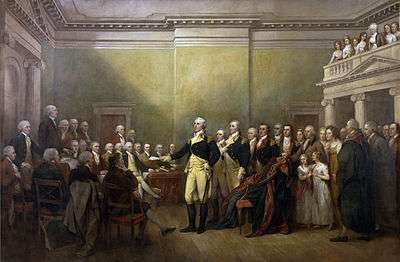1783
| Millennium: | 2nd millennium |
|---|---|
| Centuries: | 17th century · 18th century · 19th century |
| Decades: | 1750s · 1760s · 1770s · 1780s · 1790s · 1800s · 1810s |
| Years: | 1780 · 1781 · 1782 · 1783 · 1784 · 1785 · 1786 |
| 1783 by topic: | |
| Arts and Sciences | |
| Archaeology – Architecture – Art – Literature (Poetry) – Music – Science | |
| Countries | |
| Canada –Denmark – France – Great Britain – Ireland – Norway – Russia – Scotland –Sweden – United States | |
| Lists of leaders | |
| Colonial governors – State leaders | |
| Birth and death categories | |
| Births – Deaths | |
| Establishments and disestablishments categories | |
| Establishments – Disestablishments | |
| Works category | |
| Works | |
| Gregorian calendar | 1783 MDCCLXXXIII |
| Ab urbe condita | 2536 |
| Armenian calendar | 1232 ԹՎ ՌՄԼԲ |
| Assyrian calendar | 6533 |
| Bengali calendar | 1190 |
| Berber calendar | 2733 |
| British Regnal year | 23 Geo. 3 – 24 Geo. 3 |
| Buddhist calendar | 2327 |
| Burmese calendar | 1145 |
| Byzantine calendar | 7291–7292 |
| Chinese calendar | 壬寅年 (Water Tiger) 4479 or 4419 — to — 癸卯年 (Water Rabbit) 4480 or 4420 |
| Coptic calendar | 1499–1500 |
| Discordian calendar | 2949 |
| Ethiopian calendar | 1775–1776 |
| Hebrew calendar | 5543–5544 |
| Hindu calendars | |
| - Vikram Samvat | 1839–1840 |
| - Shaka Samvat | 1704–1705 |
| - Kali Yuga | 4883–4884 |
| Holocene calendar | 11783 |
| Igbo calendar | 783–784 |
| Iranian calendar | 1161–1162 |
| Islamic calendar | 1197–1198 |
| Japanese calendar | Tenmei 3 (天明3年) |
| Javanese calendar | 1708–1710 |
| Julian calendar | Gregorian minus 11 days |
| Korean calendar | 4116 |
| Minguo calendar | 129 before ROC 民前129年 |
| Nanakshahi calendar | 315 |
| Thai solar calendar | 2325–2326 |
| Wikimedia Commons has media related to 1783. |
1783 (MDCCLXXXIII) was a common year starting on Wednesday (dominical letter E) of the Gregorian calendar and a common year starting on Sunday (dominical letter A) of the Julian calendar, the 1783rd year of the Common Era (CE) and Anno Domini (AD) designations, the 783rd year of the 2nd millennium, the 83rd year of the 18th century, and the 4th year of the 1780s decade. As of the start of 1783, the Gregorian calendar was 11 days ahead of the Julian calendar, which remained in localized use until 1918.
Events
January–June

The first manned hot-air balloon, designed by the Montgolfier brothers, takes off from the Bois de Boulogne, on November 21, 1783
- February 3 – American Revolutionary War: The Kingdom of Great Britain acknowledges the independence of the United States of America. At this time the Spanish government does not grant diplomatic recognition.
- February 4 – American Revolutionary War: Great Britain formally declares that it will cease hostilities with the United States.
- February 5 – 1783 Calabrian earthquakes: First of a sequence of five earthquakes in Calabria, Italy (February 5–7, March 1 & 28), leaving 50,000 dead.
- February 26 – The United States Continental Army's Corps of Engineers is disbanded.
- March 5 – Last celebration of Massacre Day in Boston, Massachusetts.
- March 15 – Newburgh Conspiracy: A potential uprising in the Continental Army stationed at Newburgh, New York, is defused when George Washington asks the officers to support the supremacy of the United States Congress.
- April 8 – The Crimean Khanate, which had existed since 1441 and was the last remnant of the Mongol Golden Horde, is annexed by the Russian Empire of Catherine the Great.
- April 15 – Preliminary articles of peace ending the American Revolutionary War are ratified.
- May 18 – The first United Empire Loyalists, fleeing the new United States, reach Parrtown in Saint John, New Brunswick, Canada.
- May 26 – A Great Jubilee Day celebrating end of American Revolution held in Trumbull, Connecticut.
- June 4 or June 5 – The Montgolfier brothers publicly demonstrate their montgolfière hot air balloon at Annonay in France.
- June 8 – The volcano Laki in Iceland begins an 8-month eruption starting the chain of natural disasters known as the Móðuharðindin, killing tens of thousands throughout Europe, including up to 33% of Iceland's population, and causing widespread famine. It has been described as one of "the greatest environmental catastrophes in European history".[1]
July–December

The first manned hydrogen balloon La Charlière on its first flight on December 1, 1783, piloted by Prof. Jacques Charles with Nicolas-Louis Robert.

.
- July 16 – Grants of land in Canada to American loyalists are announced.
- July 24 – The Treaty of Georgievsk is signed between Imperial Russia and the Kingdom of Kartli-Kakheti making Georgia a protectorate of Russia.
- August 4 – Mount Asama, the most active volcano in Japan, begins climactic eruption, killing roughly 1,400 people directly and exacerbating a famine, resulting in another 20,000 deaths (Edo period, Tenmei 3).
- August 10 – The British East India Company packet ship Antelope (1781) is wrecked off Ulong Island in the Palau (Pelew) group, resulting in the first sustained European contact with those islands.[2]
- August 18 – The 1783 Great Meteor passes on a thousand-mile track across the North Sea, Great Britain and France, prompting scientific discussion.
- August 27 – Jacques Charles and Les Frères Robert launch the world's first hydrogen-filled balloon, Le Globe, in Paris.
- September 3 – Peace of Paris: A treaty between the United States and Great Britain is signed in Paris, formally ending the American Revolutionary War; and treaties are signed between Britain, France and Spain at Versailles ending hostilities with the Franco-Spanish Alliance. This is also the beginning of the Old West.
- September 9 – Dickinson College is chartered in Carlisle, Pennsylvania.
- October 3 – First Waterford Crystal glassmaking business begins production in Waterford, Ireland.
- November 2 – In Rocky Hill, New Jersey, United States General George Washington gives his Farewell Address to the Army.
- November 21 – In Paris, Jean-François Pilâtre de Rozier and François Laurent, marquis d'Arlandes, make the first untethered hot air balloon flight (flight time: 25 minutes, Maximum height: 900 m).
- November 24 – In Spain, the Cedula of Population is signed, stating that anyone who will swear fealty to Spain and is of the Roman Catholic faith is welcome to populate Trinidad and Tobago.
- November 25 – American Revolutionary War: The last British troops leave New York City 3 months after the signing of the Treaty of Paris.
- November 27 – English rector, John Michell concludes that some stars might have enough gravity force to prevent light escapes from them, so he called them "dark stars".
- November 29 – 1783 New Jersey earthquake: An earthquake of 5.3 magnitude strikes New Jersey.
- December 1 – Jacques Charles and Nicolas-Louis Robert make the first manned flight in a hydrogen-filled balloon, La Charlière, in Paris.
- December 4 – At Fraunces Tavern in New York City, U.S. General George Washington formally bids his officers farewell.
- December 23 – U.S. General George Washington resigns his commission as commander-in-chief of the Continental Army to the Congress of the Confederation in the Maryland State House in Annapolis, Maryland and retires to his home at Mount Vernon. Washington's resignation, described by historian Thomas Fleming as "the most important moment in American history,"[3] affirms the United States' commitment to the principle of civilian control of the military and prompts King George III to call Washington "the greatest character of the age."[4]
- December 31 – Louis-Sébastien Lenormand makes the first ever recorded public demonstration of a parachute descent by jumping from the tower of the Montpellier observatory in France using his rigid-framed model which he intends as a form of fire escape.
Date unknown
- Loyalists from New York settle Great Abaco in the Bahamas.
- The city of Sevastopol is founded on the Crimean Peninsula of the Russian Empire by rear admiral Thomas MacKenzie.
- Princess Yekaterina Vorontsova-Dashkova is elected an honorary member of the Royal Swedish Academy of Sciences, the first female foreign member and its second female member after Eva Ekeblad.
- The Evan Williams (whiskey) distillery is founded in Bardstown, Kentucky.
Births
- January 20 – Friedrich Dotzauer, German cellist and composer (d. 1860)
- January 23 – Stendhal, French writer (d. 1842)
- February 8 – Charles-Marie Denys de Damrémont, French general and governor-general of French Algeria (d. 1837)
- February 16 – Stephen Cassin, United States Navy officer (d. 1857)
- March 8 – Hannah Van Buren, née Hoes, American wife of Martin Van Buren (d. 1819)
- April 3 – Washington Irving, American author (d. 1859)
- May 25 – Philip Pendleton Barbour, American politician and Associate Justice of the Supreme Court of the United States (d. 1841)
- June 19 – Friedrich Sertürner, German pharmacist who discovered morphine in 1804 (d. 1841)
- July 24 – Simón Bolívar, Venezuelan patriot, revolutionary leader and statesman (d. 1830)
- August 7 – Princess Amelia of the United Kingdom, member of the British Royal Family (d. 1810)
- September 17
- Samuel Prout, English painter (d. 1852)
- Nadezhda Durova, First female Russian army officer (d. 1866)
- October 31 – Karl Wilhelm Gottlob Kastner, German chemist (d. 1857)
- Date unknown – The Two-Headed Boy of Bengal, sufferer from the rare condition Craniopagus parasiticus (d. 1787)
Deaths
- January 7 – William Tans'ur, English hymnist (b. 1706)
- January 15 – Lord Stirling, American Brigadier-General during the American Revolutionary War (d. 1726)
- February 6 – Capability Brown, English landscape gardener (b. 1716)
- March 23 – Charles Carroll, American lawyer and delegate to the Continental Congress (b. 1723)
- March 30 – William Hunter, Scottish anatomist (b. 1718)
- March 31 – Nikita Ivanovich Panin, Russian statesman (b. 1718)
- April 16
- Benedict Joseph Labre, French saint (b. 1745)
- Christian Mayer, Czech astronomer (b. 1719)
- May 23 – James Otis, American lawyer and patriot (b. 1725)
- September 18
- Leonhard Euler, Swiss mathematician and physicist (b. 1707)
- Benjamin Kennicott, English churchman and Hebrew scholar (b. 1718)
- September 28 – Marguerite Gourdan, French procurer.
- October 29 – Jean le Rond d'Alembert, French mathematician (b. 1717)
- November 1 – Carl Linnaeus the Younger, Swedish naturalist (b. 1741)
- November 15 – John Hanson, President of the Continental Congress (b. 1721)
- November 22 – John Hanson, American delegate to the Continental Congress (b. 1715)
- November 23 – Yoriyuki Arima, Japanese mathematician (b. 1714)
- December 13 – Pehr Wilhelm Wargentin, Swedish astronomer (b. 1717)
- December 15 – Ahmad bin Said al-Busaidi, first ruler of Oman of the Al Said dynasty (b. 1710)
- December 16 – William James, British naval commander (b. 1720)
References
- ↑ Bressan, David. "8, June 1783: The Laki eruptions". Retrieved 30 April 2012.
- ↑ "Palau". Archived from the original on 2007-12-26. Retrieved 2016-02-09.
- ↑ Fleming, Thomas. "The Most Important Moment in American History". History News Network. Retrieved 2016-05-17.
- ↑ Brookhiser (1996, p. 103)
Further reading
- John Blair; J. Willoughby Rosse (1856). "1783". Blair's Chronological Tables. London: H.G. Bohn – via Hathi Trust.
This article is issued from Wikipedia - version of the 11/22/2016. The text is available under the Creative Commons Attribution/Share Alike but additional terms may apply for the media files.